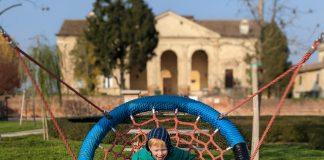On the top shelf of my oldest child’s closet is a baby book. It’s filled with details about every medical appointment in her first year of life, her monthly weight and height in the metric and standard units, and the dates on which each tiny tooth first erupted from her pink gums.
My middle child’s book, in stereotypical fashion, is a little more sparse. A few weights are missing, the dates on which his teeth came in read more like “January 2017-ish,” and a few pages might be blank.
When my youngest was born last year, I knew I would have even less time for memory keeping.
In addition to a traditional baby book for logging the usual baby stats and facts, I bought a prompted, memory-based journal for each kid. The journal has prompts for birth through age 18 and focuses more on what each child was like at every age. In addition to the baby books and journals, I have a system for school memorabilia and birthdays.
I love the honor of memory keeping for my kids, but it can also be a daunting task: How do I make time to do it well? What if I forget to document something important?
Being the resident memory keeper is also a challenge with the addition of each child, and, of course, when figuring out what to do with all those pictures on the phone camera roll. Based on my own experience and from talking with other parents, here are some practical ideas for memory keeping in baby books and beyond.

- Traditional Baby Book: Great for parents who just want the basics. A traditional baby book has space for baby’s stats, their “firsts,” and often goes through the fifth year.
- Promptly Journal: A great option for a memory-based record. Promptly’s Childhood History Journal only requires about an hour of time per year and prompts parents to share memories about their kids through age 18. A simple spiral-bound notebook is also an easy way to start journaling. New parents might even consider keeping a journal during pregnancy, the adoption process, or other parts of the journey to grow their families.
- Memorabilia Box: A great option for storing special artwork and schoolwork. Try using a file box with a hanging folder for each year from babyhood through high school, or you can use this baby-themed box linked above.
- Photo Books: Take one photo a day of your kid. Use these daily pictures, with or without captions, to create a book that documents the year. If taking daily photos feels too daunting, simply choose favorite pictures from the year and use them to compile a book. One of our Military Mom Collective writers does this and then gives the books to her kids on their birthdays. Apps like Qeepsake use text prompts to help you create beautiful photo memory books.
- Calendar: In addition to appointments and holidays, my friend Rachel used to make notes on her calendar at the end of each day, describing the day’s events. This method could be used to log anything from park playdates to a kid losing her first tooth. Another idea from one of the Military Mom Collective contributors is to use a daily planner to log memories. Like the calendar, it is already dated, and it also has the convenience of being bound.
- One-line-a-day Journal: Use a simple notebook or journal, and at the end of each day, record something your child said or did. Profound questions, silly word pronunciations, or heartwarming compliments are all fair game.
- Birthday Book: I have heard of parents asking their kids’ teachers to sign a copy of “Oh, the Places You’ll Go” with a plan to give the inscription-laden book as a graduation gift one day. We have adapted this idea in our home but instead, my husband and I write a birthday note to each kid inside a book we purchased for this purpose. We plan to give the book to the kids when they turn 18.
- Email Accounts: Create an email address for each child and send them notes, stories, and pictures to check out when they are older.

Regardless of the method(s) chosen for memory keeping, experience has taught me that the key to success is to find a system that is sustainable for the memory keeper. Will you update a calendar each day or a planner every week? Is it realistic to write in a baby book each month or in a birthday book every year? Once a decision is made, calendar reminders are a great way to update consistently.
There’s no one-size-fits-all solution to how to best keep track of the precious moments and exciting developments in our kids’ lives.
Efforts to record our children’s memories don’t need to result in heirloom-quality scrapbooks or prize-winning prose. Instead, it’s important to remember that anything we create – baby books and beyond – will bear the fruit of a labor of love.











